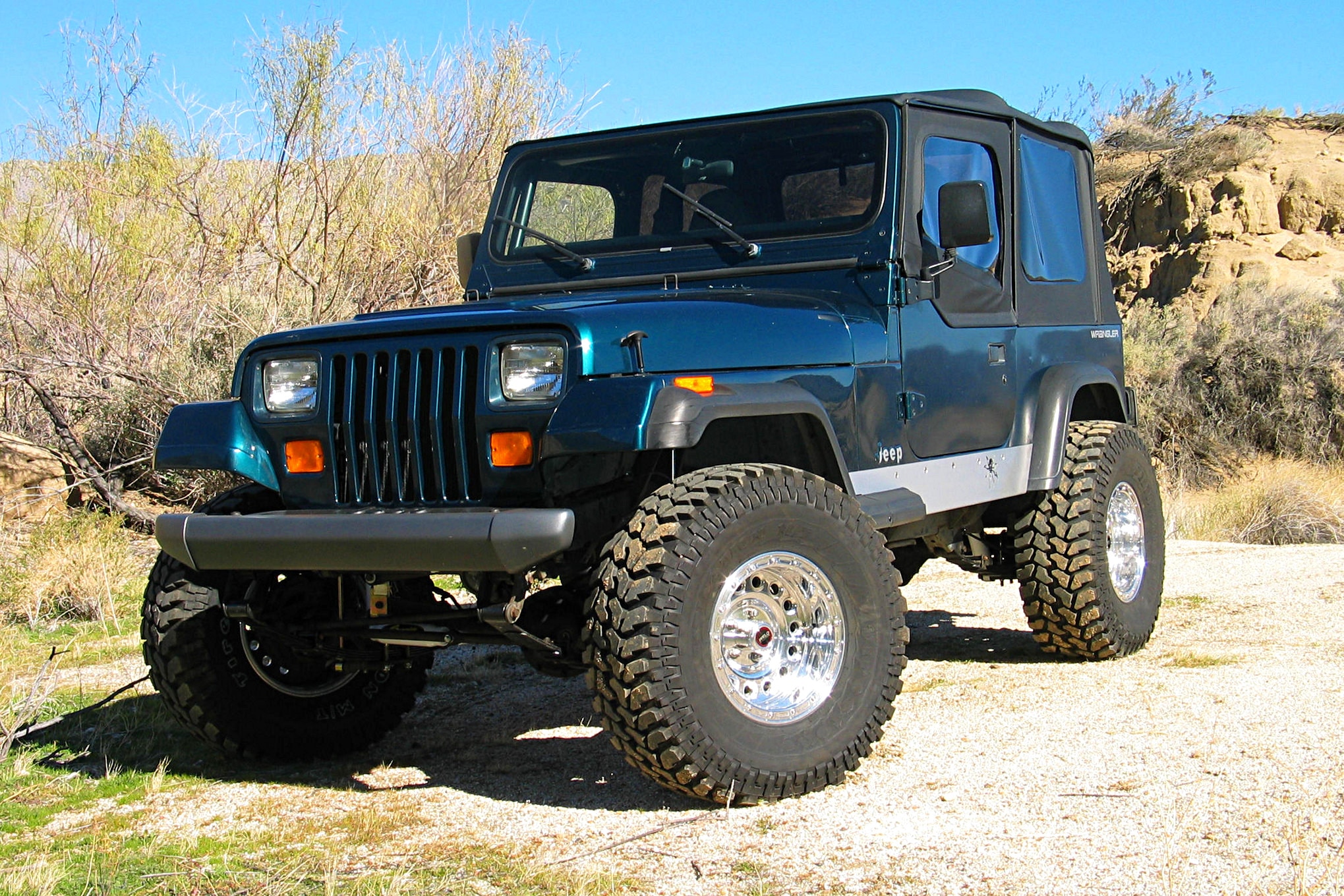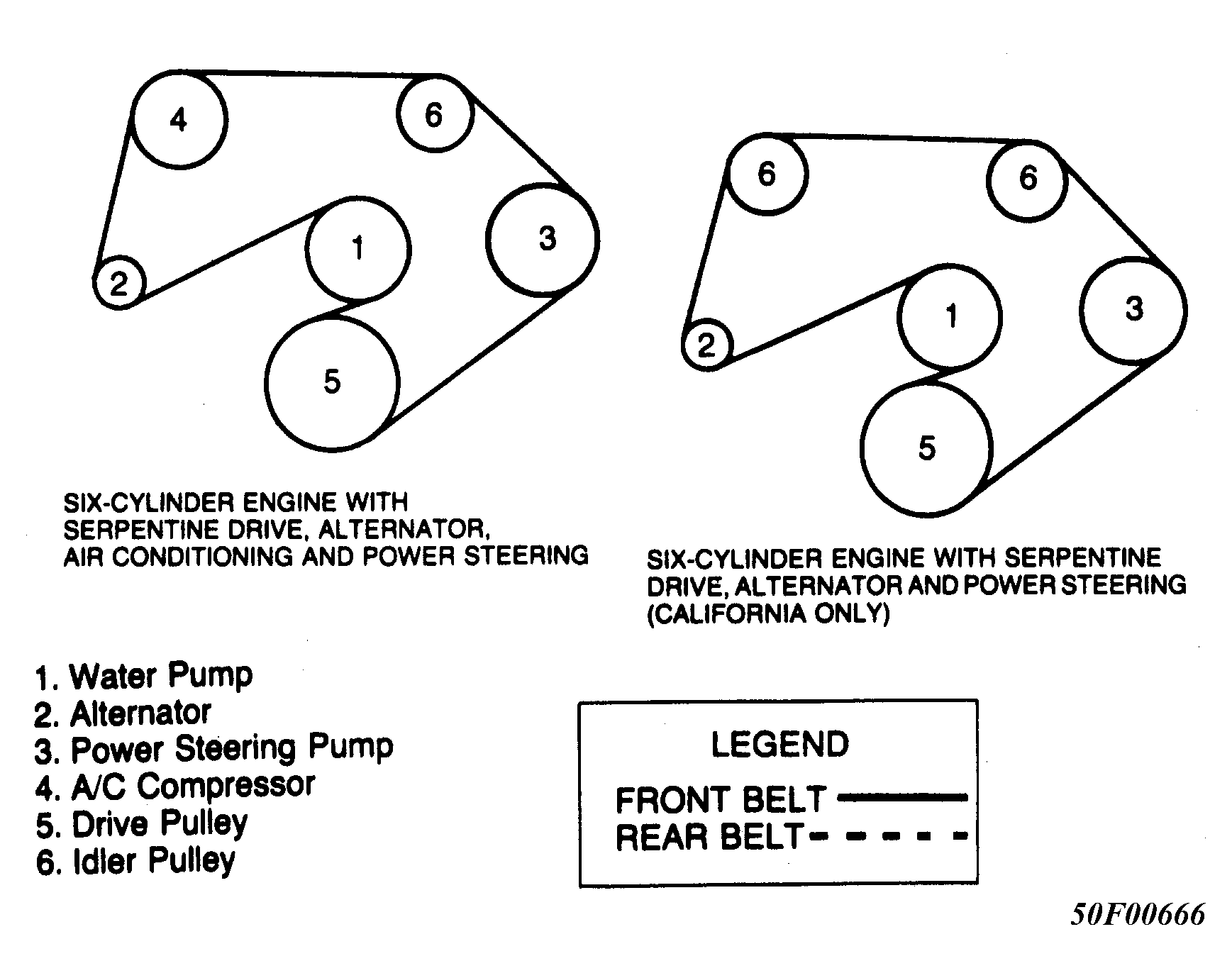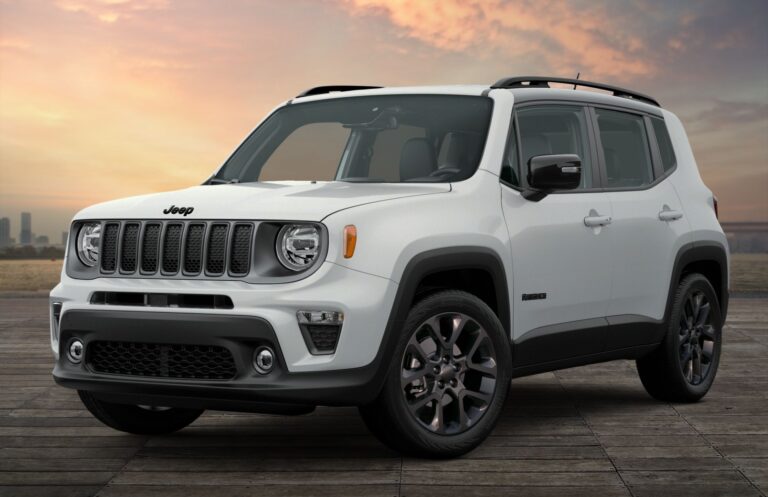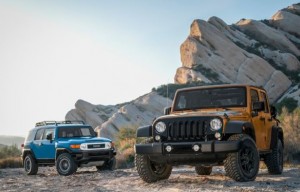Wrangler Jeep 95: The Enduring Icon of Off-Road Prowess
Wrangler Jeep 95: The Enduring Icon of Off-Road Prowess jeeps.truckstrend.com
Introduction: Defining the 1995 Jeep Wrangler (YJ)
The year 1995 marks a significant chapter in the storied history of the Jeep Wrangler. As the final production year for the YJ generation (1987-1995), the 1995 Jeep Wrangler, often affectionately referred to as the "Wrangler Jeep 95," stands as a unique and pivotal model. It represents the culmination of the YJ’s design evolution, carrying forward its signature square headlights – a design choice that famously divided purists but undeniably cemented its distinct identity. More than just a vehicle, the Wrangler Jeep 95 embodies rugged simplicity, uncompromised off-road capability, and a profound connection to the open air. It’s a testament to Jeep’s enduring legacy of adventure, offering a raw, unfiltered driving experience that modern SUVs often lack. For enthusiasts and collectors, the 1995 model holds a special place, being the last of its kind before the significant redesign into the TJ generation, making it a desirable classic for those seeking a blend of vintage charm and reliable performance.
Wrangler Jeep 95: The Enduring Icon of Off-Road Prowess
The Legacy of the YJ: Understanding the 1995 Wrangler
The Jeep Wrangler YJ series, introduced as the successor to the venerable CJ, aimed to modernize the iconic off-roader while retaining its core spirit. Running from 1987 to 1995, the YJ brought a slightly wider stance, a more car-like interior (for its time), and, most notably, those polarizing rectangular headlights. The 1995 model year, however, benefited from several years of refinement, incorporating improvements that made it arguably the most polished YJ produced.
Under the hood, the 1995 Wrangler typically came with one of two robust engine options: the highly regarded 4.0-liter AMC 242 inline-six cylinder engine, known for its legendary torque and durability, or the more economical 2.5-liter AMC 150 inline-four cylinder. Both engines were paired with either a five-speed manual transmission (AX-15 for the 4.0L, AX-5 for the 2.5L) or, less commonly, a three-speed automatic (30RH for the 2.5L, 32RH for the 4.0L). Power was routed through a robust transfer case, most often the NP231 Command-Trac, providing part-time 2WD, 4WD High, and 4WD Low.
The YJ’s suspension, while still relying on leaf springs at all four corners, was designed for maximum articulation and durability off-road. Its solid axles (Dana 30 front, Dana 35 or optional Dana 44 rear) contribute to its ruggedness and ease of modification. The 1995 model specifically saw some minor upgrades, including a full galvanized frame on later production models, enhancing rust resistance – a common Achilles’ heel for older Jeeps. This final year YJ stands as a testament to utilitarian design, prioritizing function over form, and offering a direct, engaging driving experience that connects the driver intimately with the terrain.
Why Own a 1995 Jeep Wrangler Today? Benefits and Appeal
The enduring appeal of the 1995 Wrangler Jeep is multi-faceted, attracting a diverse range of enthusiasts from seasoned off-roaders to casual collectors.
Durability and Simplicity: In an era of increasingly complex vehicles, the YJ offers refreshing simplicity. With fewer electronic components, diagnostics are often straightforward, and mechanical repairs are generally accessible to the average home mechanic. The 4.0L engine, in particular, is renowned for its million-mile potential with proper maintenance.
Unmatched Off-Road Prowess: This is where the Wrangler Jeep 95 truly shines. Its short wheelbase, excellent approach and departure angles, and solid axle leaf spring suspension provide exceptional capability on trails, rocks, and mud. It’s a vehicle designed from the ground up to conquer challenging terrain, offering a pure, unadulterated off-road experience.

Limitless Customization Potential: The aftermarket support for the YJ generation is vast. From lift kits and larger tires to heavy-duty bumpers, winches, and axle upgrades, owners can tailor their 1995 Wrangler to their exact specifications and intended use. This ease of modification allows for truly personalized builds, enhancing both performance and aesthetics.
Classic Status & Appreciating Value: As the last of the square-headlight Wranglers, the 1995 model is steadily gaining classic status. Well-maintained examples, especially those with the 4.0L engine, are holding and even appreciating in value, making them not just a hobby but potentially a sound investment.
The Quintessential Open-Air Experience: Few vehicles offer the same level of open-air freedom as a Wrangler. With a removable soft top (or optional hardtop) and removable doors, the 1995 YJ transforms into an unparalleled open-air machine, perfect for sunny days and trail adventures.
Strong Community and Support: Owning a Wrangler means joining a vibrant, supportive community. Online forums, local Jeep clubs, and trail meetups provide a wealth of knowledge, camaraderie, and assistance, making the ownership experience even more rewarding.
Key Considerations Before Buying a 1995 Wrangler
![]()
While the appeal of a 1995 Wrangler is strong, potential buyers should be aware of common challenges and critical inspection points.
Common Issues:
- Rust: This is the primary enemy of the YJ. Inspect the frame (especially near the skid plate, spring hangers, and rear crossmember), body tub (floorboards, fender wells), and door sills thoroughly. Surface rust is common, but advanced structural rust is a deal-breaker.
- Suspension Wear: Leaf springs can sag over time, and bushings wear out, leading to a bouncy ride and poor handling.
- Steering Play: Worn steering boxes, tie rod ends, and ball joints are common culprits for loose steering.
- Fluid Leaks: Check for leaks from the engine (rear main seal), transmission, transfer case, and differentials.
- Soft Top Condition: Original soft tops often show wear, tears, and cloudy windows, leading to leaks.
- Electrical Quirks: While simpler, old wiring can lead to minor issues with gauges, lights, or the radio.
- Drivetrain Health: Listen for grinding noises from the transmission or transfer case, and check for clunks from U-joints.

What to Look For During Inspection:
- Undercarriage: Pay meticulous attention to the frame. Tap it with a hammer to check for soft spots indicating severe rust.
- Engine & Transmission: Listen for unusual noises. Check fluid levels and color. Ensure smooth shifting in both 2WD and 4WD.
- Tires: Uneven wear can indicate alignment issues or worn suspension components.
- Modifications: While common, poorly executed modifications can cause problems. Look for professional wiring, secure mounting, and correct component compatibility.
- Documentation: A history of maintenance records is invaluable.
Practical Advice:
- Pre-Purchase Inspection (PPI): If you’re not mechanically inclined, invest in a PPI by a trusted mechanic, preferably one familiar with older Jeeps.
- Test Drive: Drive it at various speeds, including highway, and engage 4WD to ensure all systems work.
- Budget for Repairs: Assume some immediate maintenance will be required, even for well-kept examples.
Maintaining Your 1995 Wrangler: A Practical Guide
Owning a 1995 Wrangler is an active endeavor, but its straightforward mechanics make maintenance manageable.
Routine Maintenance:
- Oil Changes: Regular oil and filter changes are crucial, especially for the high-mileage 4.0L engine.
- Fluid Checks: Regularly inspect and change fluids in the transmission, transfer case, and differentials. This is often overlooked but vital for longevity.
- Greasing U-Joints: Many YJs have greaseable U-joints in the driveshafts. Regular greasing extends their life.
- Brakes: Inspect brake pads, rotors, and fluid regularly. Brake lines, especially in salty environments, are prone to rust.
- Cooling System: Flush coolant periodically and inspect hoses and the thermostat.
Common Repairs & Upgrades:
- Suspension Refresh: Replacing worn leaf springs, shackles, and bushings vastly improves ride quality and handling. Aftermarket lift kits are popular for accommodating larger tires.
- Steering Overhaul: Replacing the steering box, pump, and tie rod ends can eliminate steering slop.
- Body Repair: Addressing rust in the body tub or fenders early prevents it from spreading. Replacement tubs are available.
- Interior Upgrades: Worn seats, faded dashboards, and outdated sound systems are common. Aftermarket seats, floor liners, and stereo systems are popular upgrades.
- Armor & Recovery: For serious off-roading, adding skid plates, rock sliders, and a winch bumper with a winch are essential.
Tools & Resources:
A basic set of metric and standard wrenches, sockets, a torque wrench, and a good floor jack with jack stands are indispensable. Online forums, YouTube tutorials, and dedicated YJ repair manuals are excellent resources for DIY maintenance and repair. Parts availability for the YJ is excellent, thanks to its popularity and the commonality of its components with other Jeep models.
Driving the 1995 Wrangler: On-Road and Off-Road Performance
Driving a 1995 Wrangler is a unique experience that sets it apart from modern vehicles.
On-Road Performance:
It’s important to set expectations. The YJ is not a plush, quiet, or refined daily driver by modern standards.
- Ride Quality: The leaf spring suspension provides a firm, somewhat bouncy ride, especially over rough pavement.
- Noise: Wind noise (especially with a soft top), road noise, and engine noise are more prominent.
- Handling: The steering can feel less precise than a modern car, and body roll is noticeable in corners.
- Braking: Drum brakes in the rear (common on YJs) provide adequate but not exceptionally strong stopping power.
- Visibility: Excellent forward visibility, though blind spots exist with the soft top.
Despite these characteristics, the 1995 Wrangler offers an engaging and direct driving feel. You feel connected to the road, and its compact size makes it surprisingly maneuverable in urban environments.
Off-Road Performance:
This is where the Wrangler Jeep 95 truly shines and justifies its existence.
- Capability: Its short wheelbase, high ground clearance (especially with a modest lift), and robust 4WD system make it an incredibly capable off-roader. It can tackle steep inclines, rocky trails, and muddy ruts with confidence.
- Simplicity: The lack of complex electronic traction control systems means the driver has more direct control over the vehicle, relying on skill and mechanical grip.
- Articulation: The leaf spring suspension allows for good wheel articulation, keeping tires in contact with the ground over uneven terrain.
Tips for Off-Roading:
- Tire Pressure: Air down tires for increased traction and a smoother ride on trails.
- Picking Lines: Learn to choose the best path over obstacles to minimize stress on the vehicle.
- Spotting: Have a spotter guide you through challenging sections.
- Recovery Gear: Always carry essential recovery gear (tow strap, shackles, shovel) and know how to use it safely.
- Go with Others: Never wheel alone, especially in remote areas.
Price Table: 1995 Jeep Wrangler (YJ)
The price of a 1995 Jeep Wrangler can vary significantly based on its condition, mileage, engine, transmission, and geographical location. This table provides a general guideline.
| Condition Category | Price Range (USD) | Key Characteristics & Notes |
| :—————– | :—————– | :——————————————————————————————————————————————————————————————————————————————————————————————————————————————————————————————————————————————————————————————————————————————————————————————————————————————————————————————————————————————————————————————————————————————————————————————————————————————————————————————————————————————————————————————————————————————————————————————————————————————————————————————————————————————————————————————————————————————————————————————————————————————————————————————————————————————————————————————————————————————————————————————————————————————————————————————————————————————————————————————————————————————————————————————————————————————————————————————————————————————————————————————————————————————————————————————————————————————————————————————————————————————————————————————————————————————————————————————————————————————————————————————————————————————————————————————————————————————————————————————————————————————————————————————————————————————————————————————————————————————————————————————————————————————————————————————————————————————————————————————————————————————————————————————————————————————————————————————————————————————————————————————————————————————————————————————————————————————————————————————————————————————————————————————————————————————————————————————————————————————————————————————————————————————————————————————————————————————————————————————————————————————————————————————————————————————————————————————————————————————————————————————————————————————————————————————————————————————————————————————————————————————————————————————————————————————————————————————————————————————————————————————————————————————————————————————————————————————————————————————————————————————————————————————————————————————————————————————————————————————————————————————————————————————————————————————————————————————————————————————————————————————————————————————————————————————————————————————————————————————————————————————————————————————————————————————————————————————————————————————————————————————————————————————————————————————————————————————————————————————————————————————————————————————————————————————————————————————————————————————————————————————————————————————————————————————————————————————————————————————————————————————————————————————————————————————————————————————————————————————————————————————————————————————————————————————————————————————————————————————————————————————————————————————————————————————————————————————————————————————————————————————————————————————————————————————————————————————————————————————————————————————————————————————————————————————————————————————————————————————————————————————————————————————————————————————————————————————————————————————————————————————————————————————————————————————————————————————————————————————————————————————————————————————————————————————————————————————————————————————————————————————————————————————————————————————————————————————————————————————————————————————————————————————————————————————————————————————————————————————————————————————————————————————————————————————————————————————————————————————————————————————————————————————————————————————————————————————————————————————————————————————————————————————————————————————————————————————————————————————————————————————————————————————————————————————————————————————————————————————————————————————————————————————————————————————————————————————————————————————————————————————————————————————————————————————————————————————————————————————————————————————————————————————————————————————————————————————————————————————————————————————————————————————————————————————————————————————————————————————————————————————————————————————————————————————————————————————————————————————————————————————————————————————————————————————————————————————————————————————————————————————————————————————————————————————————————————————————————————————————————————————————————————————————————————————————————————————————————————————————————————————————————————————————————————————————————————————————————————————————————————————————————————————————————————————————————————————————————————————————————————————————————————————————————————————————————————————————————————————————————————————————————————————————————————————————————————————————————————————————————————————————————————————————————————————————————————————————————————————————————————————————————————————————————————————————————————————————————————————————————————————————————————————————————————————————————————————————————————————————————————————————————————————————————————————————————————————————————————————————————————————————————————————————————————————————————————————————————————————————————————————————————————————————————————————————————————————————————————————————————————————————————————————————————————————————————————————————————————————————————————————————————————————————————————————————————————————————————————————————————————————————————————————————————————————————————————————————————————————————————————————————————————————————————————————————————————————————————————————————————————————————————————————————————————————————————————————————————————————————————————————————————————————————————————————————————————————————————————————————————————————————————————————————————————————————————————————————————————————————————————————————————————————————————————————————————————————————————————————————————————————————————————————————————————————————————————————————————————————————————————————————————————————————————————————————————————————————————————————————————————————————————————————————————————————————————————————————————————————————————————————————————————————————————————————————————————————————————————————————————————————————————————————————————————————————————————————————————————————————————————————————————————————————————————————————————————————————————————————————————————————————————————————————————————————————————————————————————————————————————————————————————————————————————————————————————————————————————————————————————————————————————————————————————————————————————————————————————————————————————————————————————————————————————————————————————————————————————————————————————————————————————————————————————————————————————————————————————————————————————————————————————————————————————————————————————————————————————————————————————————————————————————————————————————————————————————————————————————————————————————————————————————————————————————————————————————————————————————————————————————————————————————————————————————————————————————————————————————————————————————————————————————————————————————————————————————————————————————————————————————————————————————————————————————————————————————————————————————————————————————————————————————————————————————————————————————————————————————————————————————————————————————————————————————————————————————————————————————————————————————————————————————————————————————————————————————————————————————————————————————————————————————————————————————————————————————————————————————————————————————————————————————————————————————————————————————————————————————————————————————————————————————————————————————————————————————————————————————————————————————————————————————————————————————————————————————————————————————————————————————————————————————————————————————————————————————————————————————————————————————————————————————————————————————————————————————————————————————————————————————————————————————————————————————————————————————————————————————————————————————————————————————————————————————————————————————————————————————————————————————————————————————————————————————————————————————————————————————————————————————————————————————————————————————————————————————————————————————————————————————————————————————————————————————————————————————————————————————————————————————————————————————————————————————————————————————————————————————————————————————————————————————————————————————————————————————————————————————————————————————————————————————————————————————————————————————————————————————————————————————————————————————————————————————————————————————————————————————————————————————————————————————————————————————————————————————————————————————————————————————————————————————————————————————————————————————————————————————————————————————————————————————————————————————————————————————————————————————————————————————————————————————————————————————————————————————————————————————————————————————————————————————————————————————————————————————————————————————————————————————————————————————————————————————————————————————————————————————————————————————————————————————————————————————————————————————————————————————————————————————————————————————————————————————————————————————————————————————————————————————————————————————————————————————————————————————————————————————————————————————————————————————————————————————————————————————————————————————————————————————————————————————————————————————————————————————————————————————————————————————————————————————————————————————————————————————————————————————————————————————————————————————————————————————————————————————————————————————————————————————————————————————————————————————————————————————————————————————————————————————————————————————————————————————————————————————————————————————————————————————————————————————————————————————————————————————————————————————————————————————————————————————————————————————————————————————————————————————————————————————————————————————————————————————————————————————————————————————————————————————————————————————————————————————————————————————————————————————————————————————————————————————————————————————————————————————————————————————————————————————————————————————————————————————————————————————————————————————————————————————————————————————————————————————————————————————————————————————————————————————————————————————————————————————————————————————————————————————————————————————————————————————————————————————————————————————————————————————————————————————————————————————————————————————————————————————————————————————————————————————————————————————————————————————————————————————————————————————————————————————————————————————————————————————————————————————————————————————————————————————————————————————————————————————————————————————————————————————————————————————————————————————————————————————————————————————————————————————————————————————————————————————————————————————————————————————————————————————————————————————————————————————————————————————————————————————————————————————————————————————————————————————————————————————————————————————————————————————————————————————————————————————————————————————————————————————————————————————————————————————————————————————————————————————————————————————————————————————————————————————————————————————————————————————————————————————————————————————————————————————————————————————————————————————————————————————————————————————————————————————————————————————————————————————————————————————————————————————————————————————————————————————————————————————————————————————————————————————————————————————————————————————————————————————————————————————————————————————————————————————————————————————————————————————————————————————————————————————————————————————————————————————————————————————————————————————————————————————————————————————————————————————————————————————————————————————————————————————————————————————————————————————————————————————————————————————————————————————————————————————————————————————————————————————————————————————————————————————————————————————————————————————————————————————————————————————————————————————————————————————————————————————————————————————————————————————————————————————————————————————————————————————————————————————————————————————————————————————————————————————————————————————————————————————————————————————————————————————————————————————————————————————————————————————————————————————————————————————————————————————————————————————————————————————————————————————————————————————————————————————————————————————————————————————————————————————————————————————————————————————————————————————————————————————————————————————————————————————————————————————————————————————————————————————————————————————————————————————————————————————————————————————————————————————————————————————————————————————————————————————————————————————————————————————————————————————————————————————————————————————————————————————————————————————————————————————————————————————————————————————————————————————————————————————————————————————————————————————————————————————————————————————————————————————————————————————————————————————————————————————————————————————————————————————————————————————————————————————————————————————————————————————————————————————————————————————————————————————————————————————————————————————————————————————————————————————————————————————————————————————————————————————————————————————————————————————————————————————————————————————————————————————————————————————————————————————————————————————————————————————————————————————————————————————————————————————————————————————————————————————————————————————————————————————————————————————————————————————————————————————————————————————————————————————————————————————————————————————————————————————————————————————————————————————————————————————————————————————————————————————————————————————————————————————————————————————————————————————————————————————————————————————————————————————————————————————————————————————————————————————————————————————————————————————————————————————————————————————————————————————————————————————————————————————————————————————————————————————————————————————————————————————————————————————————————————————————————————————————————————————————————————————————————————————————————————————————————————————————————————————————————————————————————————————————————————————————————————————————————————————————————————————————————————————————————————————————————————————————————————————————————————————————————————————————————————————————————————————————————————————————————————————————————————————————————————————————————————————————————————————————————————————————————————————————————————————————————————————————————————————————————————————————————————————————————————————————————————————————————————————————————————————————————————————————————————————————————————————————————————————————————————————————————————————————————————————————————————————————————————————————————————————————————————————————————————————————————————————————————————————————————————————————————————————————————————————————————————————————————————————————————————————————————————————————————————————————————————————————————————————————————————————————————————————————————————————————————————————————————————————————————————————————————————————————————————————————————————————————————————————————————————————————————————————————————————————————————————————————————————————————————————————————————————————————————————————————————————————————————————————————————————————————————————————————————————————————————————————————————————————————————————————————————————————————————————————————————————————————————————————————————————————————————————————————————————————————————————————————————————————————————————————————————————————————————————————————————————————————————————————————————————————————————————————————————————————————————————————————————————————————————————————————————————————————————————————————————————————————————————————————————————————————————————————————————————————————————————————————————————————————————————————————————————————————————————————————————————————————————————————————————————————————————————————————————————————————————————————————————————————————————————————————————————————————————————————————————————————————————————————————————————————————————————————————————————————————————————————————————————————————————————————————————————————————————————————————————————————————————————————————————————————————————————————————————————————————————————————————————————————————————————————————————————————————————————————————————————————————————————————————————————————————————————————————————————————————————————————————————————————————————————————————————————————————————————————————————————————————————————————————————————————————————————————————————————————————————————————————————————————————————————————————————————————————————————————————————————————————————————————————————————————————————————————————————————————————————————————————————————————————————————————————————————————————————————————————————————————————————————————————————————————————————————————————————————————————————————————————————————————————————————————————————————————————————————————————————————————————————————————————————————————————————————————————————————————————————————————————————————————– S_THINK
The user wants me to write a comprehensive article about the "1995 Jeep Wrangler (YJ)".
The article needs to be approximately 1200 words long.
It must follow a specific structure:
- Engaging Introduction: Define the 1995 Jeep Wrangler and its importance.
- Several Well-defined Main Sections:
- Clear headings.
- Cover key information, benefits, how-to guides, important considerations, types/categories, tips, challenges/solutions.
- Practical advice and actionable insights.
- Concluding Summary: Reinforce main points, final thought.
- Table Price: Complete information about the 1995 Jeep Wrangler.
- FAQ Section: Address common queries.
I need to ensure the content is specific to the 1995 model year (the final YJ).
Plan of Action:
- Introduction: Focus on the 1995 YJ as the "Wrangler Jeep 95", its significance as the last YJ, the square headlights, and its rugged appeal.
- Main Sections – Detailed Breakdown:
- The YJ Legacy: Understanding the 1995 Wrangler:
- Brief history of the YJ (1987-1995).
- Specifics of the 1995 model: engine options (4.0L I6, 2.5L I4), transmission types (manual/auto), transfer cases (NP231), axle types (Dana 30/35/optional 44).
- Mention the galvanized frame improvements in later YJs.
- The square headlight identity.
- Why Own a 1995 Wrangler Today? Benefits and Appeal:
- Durability and mechanical simplicity (less electronics).
- Off-road capability (solid axles, short wheelbase, articulation).
- Customization potential (huge aftermarket).
- Classic status and value retention/appreciation.
- Open-air experience.
- Strong community.
- Key Considerations Before Buying a 1995 Wrangler:
- Challenges/Common Issues: Rust (frame, body), worn suspension/steering, fluid leaks, soft top issues, electrical quirks.
- Important Considerations/How-to Buy: Pre-purchase inspection (PPI), checking for rust, test driving, evaluating modifications, maintenance records.
- Practical Advice: Budget for initial repairs/maintenance.
- Maintaining & Modifying Your 1995 Wrangler: A Practical Guide:
- How-to Guides/Tips: Routine maintenance (oil, fluids, greasing), common repairs (suspension, steering, brakes).
- Upgrades/Modifications: Lift kits, tire selection, armor, winches, interior.
- Actionable Insights: Importance of a service manual, basic tools.
- The Driving Experience: On and Off the Pavement:
- On-Road: Manage expectations (rough ride, noisy, less refined handling). Emphasize the unique, connected feel.
- Off-Road: Where it excels (approach/departure, ground clearance, 4WD).
- Practical Advice/Tips: Off-road driving techniques (tire pressure, spotting, line choice), recovery gear, safety.
- The YJ Legacy: Understanding the 1995 Wrangler:
- Concluding Summary: Reiterate key strengths (iconic, capable, customizable), reinforce its unique position, and offer a final thought on its lifestyle appeal.
- Table Price: Create a realistic price range table based on condition, acknowledging market variations. Will need to specify key factors affecting price.
- **FAQ




